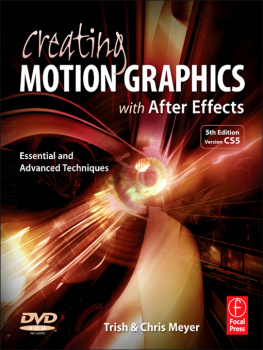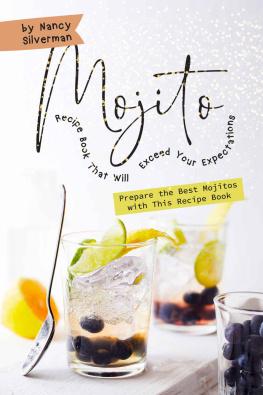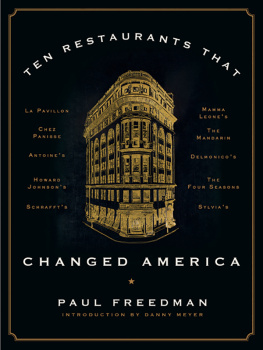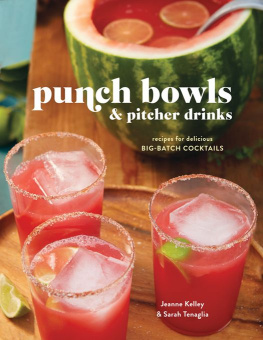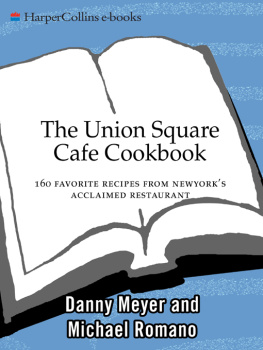Copyright 2008 by Weldon Owen Inc.
All rights reserved. Except as permitted under the U.S. Copyright Act of 1976, no part of this publication may be reproduced, distributed, or transmitted in any form or by any means, or stored in a database or retrieval system, without the prior written permission of the publisher.
Little, Brown and Company
Hachette Book Group
237 Park Avenue, New York, NY 10017
Visit our website at www.HachetteBookGroup.com
www.twitter.com/littlebrown
Little, Brown and Company is a division of Hachette Book Group, Inc. The Little, Brown logo is a trademark of Hachette Book Group, Inc.
First eBook Edition: May 2009
The following recipes are adapted from One Spice, Two Spice by Floyd Cardoz with Jane Daniels Lear: Warm Tomato Chutney ()
Copyright 2006 by Floyd Cardoz with Jane Daniels Lear
Reprinted by permission of HarperCollins Publishers
The following recipes are adapted from The Union Square Cafe Cookbook by Danny Meyer and Michael Romano: Roman-Style Marinated Olives () Bar Nuts (page 193)
Copyright 1994 by Danny Meyer and Michael Romano
Reprinted by permission of HarperCollins Publishers
ISBN: 978-0-316-07372-1
Library of Congress Control Number 2008934947
Cocktails are a lot like food when it comes to flavor. A really great cocktail doesnt need a lot of ingredients, just a combination of tastes that balances the drink. Its often a single small element that makes the whole drink come together. Dont be afraid to experiment!
BLUE SMOKE BARTENDER
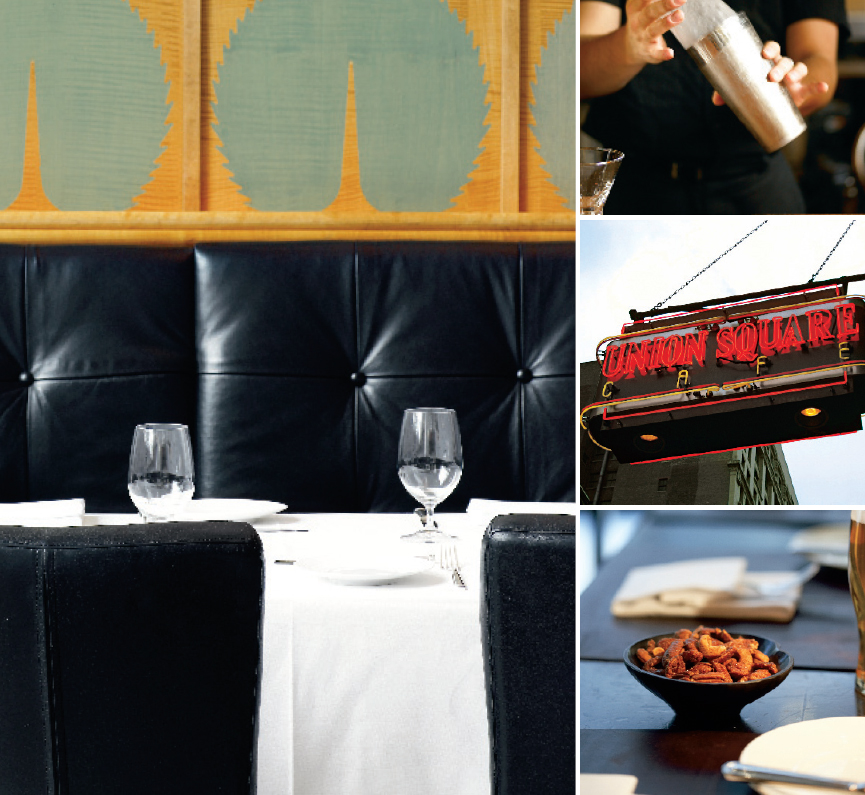
I can close my eyes and almost smell the ritual of cocktail hour in the St. Louis neighborhood where I grew up back in the 1960s and 1970s. My parents and their friends would take turns inviting one another into their respective homes for an open bar accompanied with Planters peanuts, sausage beer sticks, and on special occasions, Boursin cheese and Triscuits. Wine was just about out of the question, although occasionally there would be a screw-top bottle of Soave or Chablis available for guests. Mostly people asked for the standards: Dewars on the rocks, vodka Gibson, gin and tonic, Bloody Mary, and for the more adventurous, a bloody bull made with Campbells beef bouillon. And then there were the nights my iconoclastic dad would drink his Pernod mixed with water (which seemed like a chemistry experiment gone very wrong), a vodka Negroni, or his all-time favorite, a glass of chilled white port. As for the smellswhat I remember most was a lot of cigarette smoke, stale lemon rinds, and really cheap pickled onions.
I avoided cocktails for years. When I was in college, it was all about wine. In fact, I paid such scant attention to cocktails when I first opened Union Square Cafe, that our early guests chided me for creating an unwelcoming venue for real drinkersdevoid as it was of any liquor bottles on the back bar. Fortunately for me, and for the thousands of guests who have enjoyed our restaurants over the years, I became a convert to cocktails. And todays offerings have evolved by eons from those my parents drank.
Most of the credit for my own cocktail conversion goes to the extraordinarily talented bartenders, bar managersand even cooksIve had the privilege of working with, who have unleashed their culinary creativity to delicious results. Bartenders are increasingly taking cues from our chefs, who in turn are more aware than ever of how our beverages act as a complement for the dishes they prepare. These are exciting times.
I am so grateful to my gifted restaurant colleagues who not only concocted, tested, and wrote the delicious recipes in this book, but who also contributed the many comments and tips for making great cocktails sprinkled throughout these pages.
Have fun with this book, and please come see us soon at any of our restaurants and bars!
Cheers,

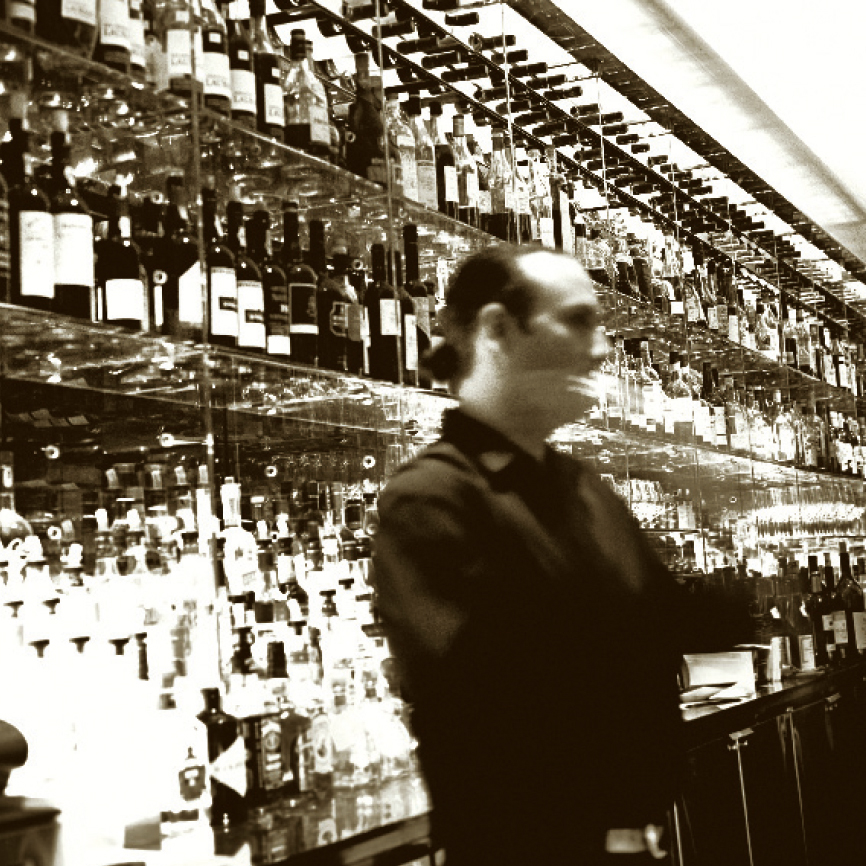

Start with fresh fruit, a great liquor, an artisanal mixer, and a little patience and chances are youll end up with a fantastic drink.
BLUE SMOKE BARTENDER
Great cocktails, like great food, spring from high-quality ingredients, inspired flavor combinations, and honed techniques. Cocktails have come a long way from the days of sour mix and Roses lime juice. At Gramercy Tavern and its sister restaurants, drinks grow organically from the same sensibility of freshness, seasonality, and classic techniques that drives the kitchenand applying those same principles at home can transform your bar.
seasonal ingredients Let the freshest produce at the market guide your cocktail offerings. Choosing the best, just as you do for cooking, helps to ensure the perfect sip. Try muddling tiny Lady apples for a sweet-tart Smashing Lady ().
techniques From knife skills to caramelizing, the tools and techniques you already employ in the kitchen can be put to work in your home bar. These concepts translate to garnishes and presentations, ingredients and flavor combinations: try thinly slicing the center section of a Bosc pear for a graceful garnish or charring sugared lemon slices with a kitchen torch to add the distinctive texture and flavor of a crme brle crust. Draw on the herbed vinaigrettes, fruit syrups, and flavored sugars of your culinary repertoire as inspiration for infused spirits, simple syrups, and rimming mixtures for your cocktails.
flourishes Garnishes on drinks, as on dinner plates, are more than just stylish. They are an opportunity to layer flavors, highlight a specific element, or enhance overall appeal. They also give you the chance to be creative and add your own signature touch. A classic citrus twist contributes fragrant oils when squeezed into a drink, while a glass rim dusted with a spiced salt or citrus sugar adds a hit of savory or sweet flavor. A skewer of liquor-infused berries or a wedge of grilled watermelon also adds a colorful culinary flair.
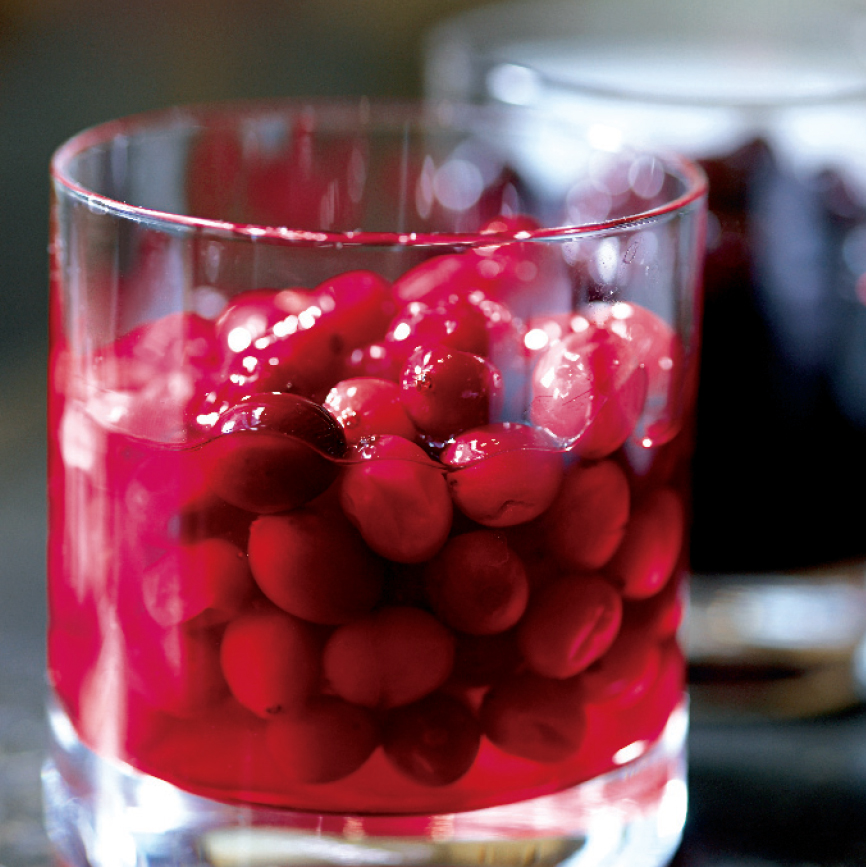
With cocktails, the best investment can be a $3 bag of ice. Use it for mixing and chilling, then use your home ice to fill the glasses.
UNION SQUARE CAFE BARTENDER
Whether on the rocks, shaken, stirred, or blended, cocktails are influenced by ice. This single element is so critical to good cocktails that Gramercy Tavern and Eleven Madison Park have a friendly rivalry over which restaurant has the best ice cubes. Here are some tips for the home bartender.
temperature Ice tempers the warming sensation created by the high-alcohol content of spirits. An ice-cold drink is a well-balanced cocktail.
freshness Ice cubes quickly pick up flavors from the freezer, so dont let them linger there too long. Use purified water and stainless-steel or silicon trays for the best-tasting (and clearest) cubes.
size Some cocktails show best with large cubes; others pair well with crushed ice. The size you use affects the taste of the drink and depends on the desired result. Larger cubes melt more slowly, preserving the flavors of the cocktail longer. Crushed ice melts quickly but guarantees a frosty glass. To crush ice without a crusher, wrap large cubes in a kitchen towel and break them up with a kitchen mallet.





